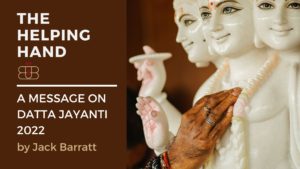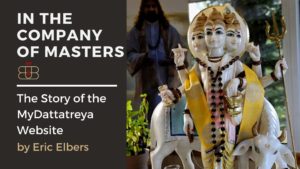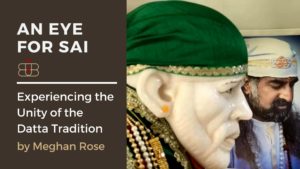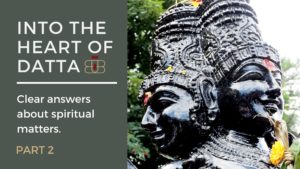Overview and Significance
Agastya was a revered Indian sage of Hinduism. In the Indian tradition, he is a noted recluse and an influential scholar in diverse languages of the Indian subcontinent. He and his wife Lopamudra are the celebrated authors in the Sanskrit text Rigveda and other Vedic literature.
Agastya appears in numerous itihasas (refers to the collection of written descriptions of important events) and Puranas (stories), including the major Ramayana and Mahabharata. He is one of the seven most revered Rishis (the Saptarishi) in the Vedic texts. He is revered as one of the Tamil Siddhas in the Shaivite (worshippers of Lord Shiva) tradition, who invented an early grammar of the Tamil language, Agattiyam, playing a pioneering role in the development of Tampraparniyan (originated at the banks of river Tamraparani) medicine and spirituality at Shaiva centers in proto-era Sri Lanka and South India. He is also revered in the Puranic literature of Shaktism and Vaishnavism. He is one of the Indian sages found in ancient sculptures and reliefs in South Asia and Southeast Asia Hindu temples, such as in the early medieval Shaiva temples on Java Indonesia. Also, the principal figure and Guru in the ancient Javanese language text Agastyaparva, whose 11th-century version survives.
Agastya is traditionally attributed to be the author of many Sanskrit texts such as the Agastya Gita found in Varaha Purana, Agastya Samhita found embedded in Skanda Purana, and the Dvaidha-Nirnaya Tantra text. After his mythical origins, he is referred to as Mana, Kalasaja, Kumbhaja, Kumbhayoni, and Maitravaruni.
In Indian Vedic literature, Canopus, the brightest star in the southern constellation of Carina and the second-brightest star in the night sky, is associated with the sage Agastya, one of the ancient Siddhas and Rishis (the others are associated with the stars of the Big Dipper). To Agastya, the star is said to be the ‘cleanser of waters’, and it’s rising coincides with the calming of the waters of the Indian Ocean. It is thus considered the son of Pulastya, son of Brahma. Moreover, Canopus is described by Pliny the Elder and Gaius Julius Solinus as the largest, brightest, and only source of starlight for navigators near Tamraparni island (ancient Sri Lanka) during many nights.

Life History
Birth
Agastya is the named author of several hymns of the Rigveda. These hymns do not provide his biography, but Pulastya, one of the Rig Vedic Saptarishis, is mentioned as his father. Agastya’s origin is mythical. His miraculous rebirth follows a yajna done by gods Varuna and Mitra, where the celestial apsara Urvashi appears. They are overwhelmed by her extraordinary sexuality and ejaculate. Their semen falls into a mud pitcher, which is the womb in which the fetus of Agastya grows. He is born from this jar in some mythologies, along with his twin Sage, Vashistha. This mythology gives him the name ‘kumbhayoni,’ which literally means ‘he whose womb was a mud pot.’
Agastya and Lopamudra
It once happened that Rishi Agastya paid a visit to the heavens. On the way to Swarglok (heaven), he found a group of people hanging upside down from a tree. Rishi Agastya was surprised and asked the reason for their pitiful state. The people replied that they were Agastya’s ancestors, and it was Rishi Agastya who was the reason for their condition, which surprised the Sage. They mentioned to Rishi Agastya that – as Agastya was unmarried and childless, nobody could offer them oblations after him and hence they were in such a state.
Rishi Agastya repented for their plight and decided to find a suitable girl to marry to relieve his ancestors. He reached the kingdom of Vidarbha and saw that the king was performing a Yagna (fire ceremony) to beget a child. Rishi Agastya knew that his destiny of being a married man lay here and blessed the king. Subsequently, a daughter was born. She was named Lopamudra and grew into a beautiful and intellectual princess.
When Lopamudra was of age, Rishi Agastya revisited the king and asked him to give Lopamudra’s hand in marriage. The king had all the due respect for the Sage but was worried whether his daughter, a princess, would agree to leave her comfortable palace life and become an ascetic’s wife. But the wise and noble princess duly agreed without a single hesitation and happily married Rishi Agastya.
Lopamudra was a chaste wife and duly took care of all her husband’s needs at all times. However, Rishi Agastya got engrossed in his austerities and forgot all about her. Dejected, Lopamudra composed a hymn demanding his love and attention. Rishi Agastya realised that he had forgotten his duty towards her and his ancestors and changed his ways. Soon, a son named Dhirdyasu was born, and thus Rishi Agastya’s ancestors were relieved from their states and ascended to the heavenly skies. Dhirdyasu is described in the Mahabharata as a boy who learns the Vedas listening to his parents while in the womb and is born into the world reciting the hymns.
Rishi Agastya and Lopamudra are worshipped as one of the sacred Rishi couples of Sanatana Dharma. Like Rishi Agastya, Lopamudra also was a great Vedic scholar, and there are many hymns from the Rig Veda composed by her. They both are worshipped in Durbashtami Vrata, a festival for women.
Even though born as a princess, Lopamudra left all her comforts and luxuries and duly followed Rishi Agastya. Being a Sage, Rishi Agastya duly followed his duty to be a family man and fulfill his responsibilities towards his ancestors. The rarely known stories of this divine couple are great insights for us to understand that when a husband and a wife fulfill duty and love, they become icons of worship in all times flowing.
Agastya in Vedas
Agastya is mentioned in all the four Vedas and is a character in the Brahmanas, Aranyakas, Upanishads, epics, and many Puranas. He is the author of hymns 1.165 to 1.191 of the Rigveda (~1200 BCE). He ran a Vedic school (gurukul), as evidenced by hymn 1.179 of the Rigveda, which credits its author to be his wife Lopamudra and his students. He was a respected Sage in the Vedic era, as many other hymns of the Rigveda composed by other sages refer to Agastya. The hymns composed by Agastya are known for verbal play and similes, puzzles and puns, and striking imagery embedded within his spiritual message.
His Vedic poetry is particularly notable for two themes. In one set of hymns, Agastya describes a conflict between two armies led by gods Indra and Maruts, which scholars such as G. S. Ghurye have interpreted as an allegory of a war between Arya (Indra) and Dasa (Rudra). Agastya successfully reconciles their conflict, makes an offering wherein he prays for understanding and loving-kindness between the two. Twenty-one out of the twenty-seven hymns he composed in Mandala 1 of the Rigveda have his signature ending, wherein he appeals, ‘May each community know refreshment (food) and lively waters.’ These ideas have led him to be considered as a protector of both the Arya and the Dasa. However, some scholars interpret the same hymns as allegories for conflicting ideologies or lifestyles because Agastya never uses the words Arya or Dasa, and only uses the phrase ubhau varnav (literally, ‘both colours’). The theme and idea of ‘mutual understanding’ as a means for lasting reconciliation, along with Agastya’s name, reappears in section 1.2.2 of the Aitareya Aranyaka of Hinduism.
The second theme, famous in Hinduism literature, is a discussion between his wife Lopamudra and him about the human tension between the solitary monastic pursuit of spirituality versus the responsibility of a householder’s life and raising a family. Agastya argues that there are many ways to happiness and liberation, while Lopamudra presents her arguments about the nature of life, time, and the possibility of both. She successfully seduces Agastya in the simile-filled Rigvedic hymn 1.179.
Agastya is mentioned in both the oldest and the youngest layers of the Rigveda (c. 1500–1200 BCE), such as in hymn 33 of mandala 7, which is older than mandala 1. He is also mentioned in the other three Vedas and the literature such as in verses 5.13–14 of the Nirukta. Moreover, Agastya and his ideas are cited in numerous other Vedic texts, such as section 7.5.5 of Taittiriya Samhita, 10.11 of Kathaka Samhita, 2.1 of Maitrayani Samhita, 5.16 of Aitareya Brahmana, 2.7.11 of Taittiriya Brahmana, and 21.14 of Pancavimsati Brahmana.
Agastya in Ramayana
Sage Agastya is mentioned in the Hindu epic Ramayana in several chapters, with his hermitage described to be on the banks of river Godavari.
In the Ramayana, Agastya and Lopamudra are described as living in the Dandaka forest on the southern slopes of the Vindhya mountains.
The purpose of Shri Ram’s exile reached its true zenith when he met Rishi Agastya. After visiting different ashrams for ten years in the Dandak forest, Shri Ram and Mata Sita and Lakshman return to Rishi Suteekshn’s ashram. He requests Rishi Suteekshn to take them to Rishi Agastya, his brother. Rishi Suteekshn gladly agreed, and all set out to meet the great Sage.
Rama praises Agastya as the one who can do what gods find impossible. Rama describes him as the sage who asked Vindhya mountains to lower themselves so that Sun, Moon and living beings could easily pass over it. He is also described as the sage who used his Dharmic powers to kill demons Vatapi and Ilwala after they had jointly misled and destroyed 9,000 men.
According to the Ramayana, Agastya is a unique sage, who is short and heavy in build, but by living in the south, he balances the powers of Shiva and the weight of Kailasa and Mount Meru. Agastya and his wife meet Rama, Sita and Lakshmana. Rishi Agastya bestows Shri Ram the divine bow which Vishwakarma made. He also gives two inexhaustible quivers with arrows to both Shri Ram and Lakshman, a powerful arrow called the Vaishnavastra to Shri Ram, and a divine sword to Lakshman.
Rishi Agastya was the perfect guide knowing the future when he suggested that Panchavati would be a suitable place for Shri Ram to spend the rest of the exile time, as he knew that Shri Ram’s real mission of eliminating the evil forces would start from Shoorpanakha.
Panchavati was on the borders of Janasthan, the outpost of demons. By sending Shri Ram, Rishi Agastya marked the annihilation of the 14,000 demons residing in Janasthan in the hands of Shri Ram, thus making Dandak forest free of evil forces.
Agastya taught Rama the ‘Aditya Hridayam’- a stotra in praise of the Sun God which when chanted with sincerity, makes the person victorious. Rama recited this just before killing Ravana.
Agastya in Mahabharata
The story of Agastya is mirrored in the second major Hindu epic, Mahabharata. However, instead of Rama, the story is told as a conversation between Vaisampayana and Lomasa in section 33 of Book 3, the Vana Parva (the Book of Forest).
He is described in the epic as a Sage with enormous powers of ingestion and digestion. Agastya, once again, stops the Vindhya mountains from growing and lowers them, and he kills the demons Vatapi and Ilvala in much the same mythical way as in the Ramayana. The Vana Parva also describes the story of Lopamudra and Agastya getting engaged and married. It also contains the mythical story of a war between Indra and Vritra, where all the demons hide in the sea, gods requesting Agastya for help, who then goes and swallows the ocean, thereby revealing all the demons to the gods.
Agastya in Puranas
The Puranic literature of Hinduism has numerous stories about Agastya, more elaborate, more fantastical, and inconsistent than the mythologies found in Vedic and Epics literature of India. For example, chapter 61 of the Matsya Purana, chapter 22 of Padma Purana, and seven other Maha Puranas tell the entire biography of Agastya. Some list him as one of the Saptarishi (seven great Rishis), while in others, he is one of the eight or twelve extraordinary sages of the Hindu traditions. The names and details are not consistent across the different Puranas, nor in different manuscript versions of the same Purana. He is variously listed along with Angiras, Atri, Bhrigu, Bhargava, Bharadvaja, Visvamitra, Vasistha, Kashyapa, Gautama, Jamadagni and others.
Agastya is reverentially mentioned in the Puranas of all major Hindu traditions: Shaivism, Shaktism, and Vaishnavism. Many of the Puranas include lengthy and detailed accounts of the descendants of Agastya and other Saptarishis.
Tamil texts
In Tamil traditions, Agastya is considered the father of the Tamil language and the compiler of the first Tamil grammar, called Agattiyam or Akattiyam. Agastya has been a culture hero in Tamil traditions and appears in numerous Tamil texts.
There are similarities and differences between the Northern and Southern (Tamil) traditions about Agastya. According to Iravatham Mahadevan, both traditions state that Agastya migrated from north to south. The Tamil text Purananuru, dated to about the start of the common era, or possibly about 2nd century CE, in verse 201 mentions Agastya and many people migrating south.
In the northern legends, Agastya’s role in spreading Vedic tradition and Sanskrit is highlighted, while in southern traditions his role in spreading irrigation, agriculture and augmenting the Tamil language is emphasied. In the north, his ancestry is unknown, with mythical legends limiting themselves to saying that Agastya was born from a mud pitcher. In southern traditions, his descent from a pitcher is a common reference, but two alternate southern legends place him as the Cankam (Sangam) polity, and he is said to have led the migration of eighteen Velir tribes from Dvaraka to the south.
The traditional northern stories, states Mahadevan, are ‘nothing more than a collection of incredible fables and myths,’ while the southern versions ‘ring much truer and appear to be a down-to-earth account of a historical event.’ Others disagree. According to K.N. Sivaraja Pillai, for example, there is nothing in the early Sangam literature or any Tamil texts before the mid-1st millennium CE that mentions Agastya. The earliest mention of the role of Agastya in the Tamil language, according to Richard Weiss, can be traced to the Iraiyanar Akapporul by 8th-century Nakkirar. However, in medieval era stories of the Tamil tradition, Agastya pioneered the first Sangam period that lasted 4,440 years and took part in the second Sangam period that lasted another 3,700 years.
The Tirumantiram describes Agastya as an ascetic sage who came from the north and settled in the southern Pothigai mountains because Shiva asked him to. He is described as the one who perfected and loved both Sanskrit and Tamil languages, amassing knowledge in both, thus becoming a symbol of integration, harmony, and learning, instead of being opposed to either. According to the Skanda Purana, the whole world visited the Himalayas when Shiva was about to wed Parvati. This caused the earth to tip to one side. Shiva then requested Agastya to go to the southern region to restore the equilibrium. Thus, Agastya migrated south at Shiva’s behest.
Buddhist texts
Several Buddhist texts mention Agastya. Just like early Buddhist texts such as Kalapa, Katantra and Candra-vyakarana adapting Panini, and Asvaghosa adopting the more ancient Sanskrit poetic methodology as he praises the Buddha, Agastya appears in 1st millennium CE Buddhist texts. In Tamil texts, for example, Akattiyan is described as the sage who learnt Tamil and Sanskrit grammar and poetics from Avalokitan (another name for Buddha-to-be Avalokiteshvara).
Javanese and southeast Asian texts
Agastya is one of the most important figures in several medieval Southeast Asian inscriptions, temple reliefs, and arts. He was particularly popular in Java Indonesia till Islam started to spread throughout the islands of Indonesia. He is also found in Cambodia, Vietnam, and other regions. The earliest mention of Agastya is traceable to about the mid-1st millennium CE, but the 11th-century Javanese language text Agastya-parva is a remarkable combination of philosophy, mythology, and genealogy attributed to Sage Agastya.
The Agastya-parva includes Sanskrit verse (shlokas) embedded within the Javanese language. The text is structured as a conversation between a Guru (teacher, Agastya) and a Sisya (student, Agastya’s son Drdhasyu). The style is a mixture of a didactic, philosophical, and theological treatise, covering a diverse range of topics much like Hindu Puranas. The chapters of the Javanese text include the Indian theory of cyclic existence, rebirth, and samsara, creation of the world by the churning of the ocean (Samudra Manthan), theories of the Samkhya and the Vedanta school of Hindu philosophy, major sections on God Shiva and Shaivism, some discussion of Tantra, a manual-like summary of ceremonies associated with the rites of passage and others.
While the similarities between the Agastya-parva text and classical Indian ideas are obvious, according to Jan Gonda, the Indian counterpart of this text in Sanskrit or Tamil languages has not been found in Indonesia or in India. Similarly, other Agastya-related Indonesian texts, dating from the 10th to 12th centuries, discuss ideas from multiple sub-schools of Shaivism, such as theistic Shaivasiddhanta and monistic Agamic Pashupata. The texts declare these theologies to be of equal merit and value.
Agastya is common in medieval era Shiva temples of southeast Asia, such as the stone temples in Java (Candi). Along with the iconography of Shiva, Uma, Nandi, and Ganesha, who face cardinal directions, these temples include sculpture, image, or relief of Agastya carved into the southern face. The Shiva shrine in the largest Hindu temple complex in southeast Asia, Prambanan, features four cellars in its interior. This central shrine within the Prambanan group of temples dedicates its southern cellar to Agastya.
The Dinoyo inscription, dated 760 CE, is primarily dedicated to Agastya. The inscription states that his older wooden image was remade in stone, thereby suggesting that the reverence for Agastya iconography in southeast Asia was prevalent in an older period. In Cambodia, the 9th-century king Indravarman, who is remembered for sponsoring and building many historic temples and related artworks, is declared in the texts of this period to be a descendant of sage Agastya.
Agastya and Mahavatar Babaji
Babaji was born on 30 November 203 AD in a small coastal village now known as Parangipettai, in Tamil Nadu, India. He was born under the same star (Rohini) as Lord Krishna and was given the name Nagarajan. Babaji is considered to be an incarnation of Lord Muruga in a body that fittingly pays homage to him as lord of eternal youth and beauty.
His parents were Nambudri Brahmins who had immigrated there from the Malabar coast on the western side of South India. At the age of five, someone kidnapped him and sold him as a slave at Dacca, the capital of Bangladesh.
Fortunately, his new owner was a kind man, and he freed Nagarajan shortly thereafter. He joined a small group of wandering monks due to their radiant faces and love for God, and for the next few years, wandered from place to place studying Holy Scriptures. Finally, he migrated to Benares and shone as a Sanskrit scholar of great eminence.
At the age of eleven, he made a difficult journey by foot and boat with a group of ascetics to Kathirgamam on the southern coast of Sri Lanka. There he met Siddha Bhoganathar and became his disciple. He performed intensive yoga sadhanas for eighteen months with him. Finally, drawing inspiration from the great Siddha of Science, Bhoganathar, he was able to appreciate and understand the full significance of Siddhantha Yoga and Soruba Samadhi, and accepted the challenge of attaining this mystic goal, supreme Samadhi.
Bhoganathar inspired Babaji to seek his initiation into Kriya Kundalini Pranayama from Siddha Agastya. At the age of fifteen, Babaji became a disciple of Agastya and was fortunate to be initiated into the secrets of Kriya Kundalini Pranayama at Kutralam. Babaji then made a long pilgrimage to Badrinath and remained absorbed for years in the intensive Yogic Sadhana taught to him by Bhoganathar and Agastya, finally to emerge ‘Laughing at the Limitations of Death.’ The immortal Babaji made his contributions to the nucleus given by Sage Agastya, renamed it ‘Kriya,’ and has retained his form through the centuries, tapping many, speaking to few, and materialising to give darshan to his saintly chosen. For centuries, he worked behind the scenes as inspiration and guidance to past Kriya Masters like Adi Shankara, Kabir Das, Lahiri Mahasaya, Sri Yukteswar, Paramahamsa Yogananda, Shri Mahashaktiananda, and many others.

Tradition and Gurus
Founder, Siddha Tradition.
The Siddhas were spiritual adepts who possessed the ashta siddhis – the eight supernatural powers. Sage Agastya is considered the Guru (master) of all Siddhar, and the Siddha medicine system is believed to have been handed over to him by Lord Muruga (aka Karthikeya) son of the Hindu God Lord Shiva and Goddess Parvathi. Siddhas are the followers of Lord Shiva. Agastya is the first Siddha. His disciples and other Siddhas contributed thousands of texts on Siddha literature, including medicine, and were the propounders of this medical system in this world. While Sage Agastya is considered the founder of the Siddha tradition, his disciples carried it further and have continued it to this day. The Siddha system of indigenous medicine is still being practiced.
Disciples of Rishi Agastya
Sage Agastya had twelve disciples:
Tiranadhumak or Tolkappiyar, Chemputchey, Atankotta, Turalinkan, Vaiyappikan, Vayppiyan, Panamparan, Kalaramban, Avinayan, Kakkaipatiniyan, Narrattan, Vamanan
Rishi Agastya is one of the most admired and reputed Sages in Hinduism. His contribution to literature, medicine, astrology, yoga, arts, and science is immeasurable.
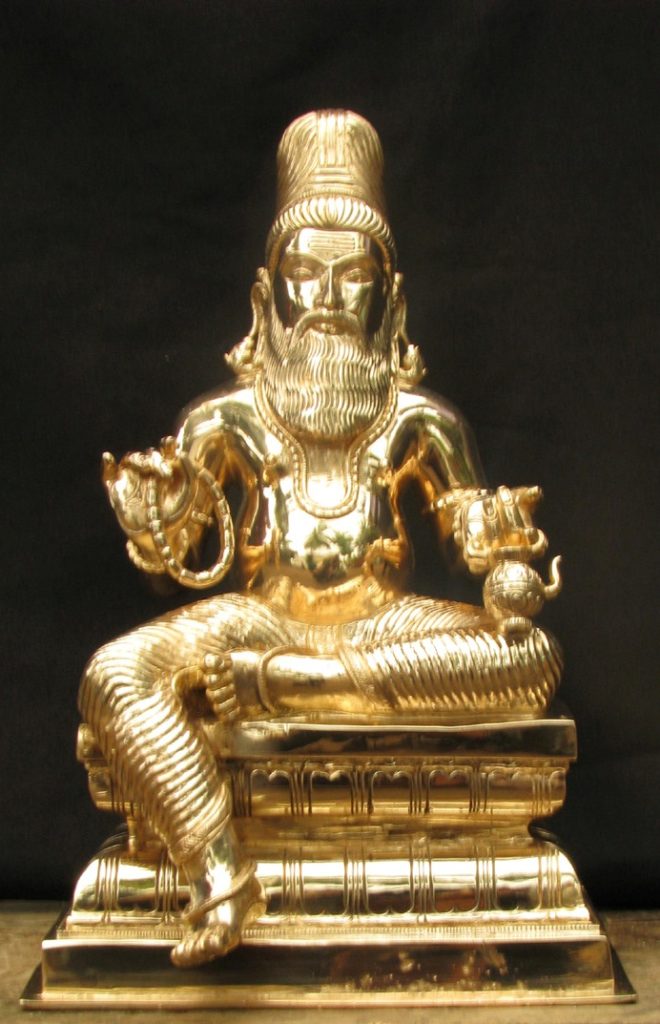
Teachings
The great Sage Agastya has written several ancient texts and scriptures, including Agastya Gita mentioned in Varaha Purana, Agastya Samhita, a treatise on traditional medicine mentioned in Skanda Purana, Dvaidha-Nirnaya Tantra text. He also wrote on Astrology and Nadi Jyotisyam (Predictions using the print of thumb finger).
Agastya is attributed to be the author of Agastimata, a pre-10th century treatise about gems and diamonds, with chapters on the origins, qualities, testing, and making jewelry from them. Several other Sanskrit texts on gems and lapidary are also credited to Agastya in the Indian traditions.
He invented the early grammar of the Tamil language, Agattiyam, playing a pioneering role in the development of Tampraparniyan (meaning created on the banks of river Tamraparani) medicine, and spirituality.
Agastya is also considered as one of the foremost exponents of the martial art Kalaripayattu, the mother of most of the oriental martial art forms. Unlike other martial arts, which are mostly about training the human body and mind to defend oneself and defeat an opponent, Kalaripayattu is taught as a complete science with instruction on human anatomy, physiology, and how to treat the same. It is also unique in the way it is taught and practised. Unlike other martial art forms, Kalari teaches how to disable an opponent through prayogam, and the revival of the person disabled through upasamanam. Some of the techniques of Kalari are so subtle and closely border spiritual processes that spiritual Masters have found the practice of Kalari a good preparation of the body and mind to experience higher states of consciousness.
Human civilisation should be thankful for Rishi Agastya’s theory of electricity generation. His theory for generating electricity requires an earthen pitcher, copperplate, copper sulfate, wet sawdust, and mercury amalgamated zinc sheet. These same principles scientists have used to produce current.
Sacred Practices/Sadhana
Sri Vidya Sadhana was practiced by all Saptarishis (7 Seers). Different variations were used by Parvati, Brahma, Agastya, Lopamudra, Kubera, Nandi, Surya, Indra, Chandra, Shankara, Rudra, Vishnu, Yama, Durvasa, Parashurama, Viswamitra, etc., for different achievements. Sri Vidya was also taught by Dattatreya to Parasurama, before teaching ‘Tripura Rahasya.’
Sacred Mantras
The popular prayer to the Supreme Goddess, the Lalita Sahasranama, the thousand names of the Goddess, was composed by Sage Agastya. Another composition by Agastya is Saraswati Stotram, in praise of the Goddess of Learning. Agastya’s prayer to Hanuman is called the Ekadasa Mukha Hanumantha Kavacham. Agastya taught Rama the ‘Aditya Hridayam’- a stotra in praise of the Sun God. He composed Shakti Tantras, in which he codified 64 types of external energies. He taught Nila, who was cursed by hermits, ‘Sammohan Bhairava mantra’ for liberation.
Saraswati Stotram https://www.youtube.com/watch?v=jwFAQ-lWu_E, https://www.youtube.com/watch?v=gCGffx-Af_M
Ekadasa Mukha Hanumantha Kavacham https://www.youtube.com/watch?v=Xk010Bk90J8
Lalita Sahasranama https://www.youtube.com/watch?v=DtSBLpQStT4
Aditya Hridayam stotra (hymn) https://www.youtube.com/watch?v=uzNMkz9Ulbw
Miracles
Destruction of Kalakeyas
In the Krita Yuga, the first and highest of the four Yugas [world ages] in a Yuga cycle, also known as Satya Yuga, there was a herd of powerful demons called Kalakeyas who were very cruel and always on the prowl to wage wars with gods. Vritrasura was their chief. They started creating troubles to righteous acts in the world and became a major hindrance to the dharmic rhythm prevailing in the age.
The gods could not face the might of demons and approached Lord Brahma. He advised them to obtain the backbone of Rishi Dadhichi and mold a weapon to destroy the demonic forces. Dadhichi was a Rishi who stood steadfast for thousands of years in penance, and his backbone had become so powerful to attract the attention of gods.
The gods bowed before him and sought a boon for the benefit of humanity at large. ‘Loka Kalyanam’ (good for the society) was the uppermost principle that encouraged the Sages to indulge in great sacrifices. Dadhichi, by his own volition, reduced to ashes leaving aside his bones. Tvashtra Prajapati took the cervical bone and molded it into a great weapon called Vajrayudha. Indra took the Vajrayudha, and all other gods bestowed their strength to Lord Indra.
Under the leadership of Indra, a great war was fought in which Indra could kill Vritrasura with his newly acquired powerful weapon, Vajrayudha. The asuras (demons – here Kalakeyas) ran helter-skelter and took refuge in ocean waters.
The Kalakeyas started regrouping beneath the depths of ocean waters and started devising strategies to destroy all the three worlds (earth, hell, and heaven). Ultimately, they came out with a plan. Those who are intellectuals and dwell in tapas are to be destroyed first.
‘All the worlds sustain on the power of tapas or meditation. Let us destroy their tapas. Let us capture the Sages and Seers. If they are killed, all the worlds are as good as killed.‘
Kalakeyas started implementing their plans immediately. In the nights, when the worlds are sleeping, they came out and capture the Sages. They used to eat the Sages mercilessly. In a span of a few days, there were found half-eaten Sages, debilitated Sages, and disillusioned Sages thrown on the streets. Common people started running with fear to unknown destinations.
The gods did not know what to do and approached Lord Vishnu for solace. Vishnu consoled them and asked them to think of a plan to evaporate the waters of the ocean since Kalakeyas had hidden beneath the water. He suggested that they should approach Agastya, a great Sage who could help gods by devouring the ocean waters.
The gods headed by Indra then reached Agastya with all devotion and begged to help them in their endeavor to destroy the Kalakeyas. Agastya agreed to help the gods in the interest of alleviating human suffering.
Agastya wanted to reach the southern part of Bharat to get to the ocean waters. But at that point in time, there was a major hindrance. The sun god Surya was taking perambulations around the Meru Mountain every day as per the cosmic design of Lord Brahma. But the Vindhya mountain did not like it, so it started growing and growing, and ultimately obstructed the passage of the sun and the moon. When Vindhyas grew to greater heights, no one was able to cross from north to south. But Agastya had to cross the mountain to keep up his pledge with the gods. Vindhyas refused the advice of gods but could not say no to sage Agastya because of his power of penance.
Agastya reached Vindhyas and said, ‘I am going towards the southern direction for a dharmic cause. You come down to your normal size and allow me to cross over. Until I come back, you will be like that.‘ Vindhyas bowed before the spiritual power of Sage Agastya, and Agastya crossed Vindhyas, and never went back.
Agastya reached the ocean. To extricate Kalakeyas from the ocean bed, he had to drink the waters. The task is stupendous but not so difficult for a Seer like Agastya. ‘I will drink the ocean waters for the good of the society,‘ Agastya declared, and then he devoured all waters in a single stretch.
When all the waters were wiped out, the Kalakeyas were easily spotted. The gods at once pounced over them and destroyed all the demons. A few Kalakeyas who could escape the onslaught virtually tore open the earth and reached pataḻa (hell).
Ilvala and Vatapi- the demons who were destroyed by Agastya
Ilvala and Vatapi were two brothers living in a town called Manimati nagaram. One day the elder brother Ilvala approached a Brahmin Sage and requested him to bestow a boon upon him so that he could have a child as powerful as Indra. When the Sage refused to oblige his request, Ilvala started disliking the Brahmins in general and started destroying the Brahmin community.
By his demonic magic, he could turn his brother Vatapi into a goat and used to cook the goat’s meat for Brahmins. Once they had eaten, Ilvala used to call out, ‘Hi, Vatapi! Come here.’ Then Vatapi used to come out of the stomachs of Brahmins in his normal form, tearing their stomach apart, thus killing the Brahmins instantaneously.
When Ilvala heard the approach of Sage Agastya to his place, he received him and the three kings with all courtesy. Then he cooked goat’s meat for offering to his guests. The kings knew the trick played by Ilvala, and were awestruck.
Agastya smiled and ate all the goat’s meat alone. Ilvala started calling, ‘Vatapi, Vatapi!’. Agastya pronounced, ‘Vatapi! Jirno bhava’ (Meaning: Vatapi, digest well). Vatapi was then fully digested in the stomach of Agastya. Ilvala was disappointed. He pretended as if he was not worrying, and he asked Agastya what he could offer to him.
Agastya requested huge wealth for the kings and himself. Ilvala arranged money, and they left in a chariot. But Ilvala could not tolerate the acts of Agastya and ran after the chariot to kill him. Agastya just turned and, with a hiss of a sound, turned Ilvala into ashes. So he freed the country from the evil designs of the demons.
Stabilised the Earth
At the time of the marriage of Shiva and Parvati, Agastya was sent to the south by Shiva himself to stabilise the shaking earth. He did so with considerable ease.
Devendra’s confrontation with Agastya
Once, Agastya began a twelve-year-long yagya. Several Sages took part in the fire sacrifice. These Sages could therefore not perform yajnas in their ashrams for twelve years and Indra did not get havis. He was angry and stopped the rain. The earth dried, and crops failed. But Agastya fed everyone sumptuously. The Sages were surprised to know how Agastya was able to feed while the earth was reeling under severe famine. Some of them were worried about the successful conclusion of the yagna. Then Agastya said, ‘O revered Sages, do not worry. If Devendra causes rain to fall on the earth, it is well and good. If he does not, I will assume the role of Devendra and protect everyone on the earth.‘ When Devendra heard about Agastya’s resolve, he got scared and caused rain to fall on the earth. This way, Sage Agastya did a lot for the welfare of the people on the earth.
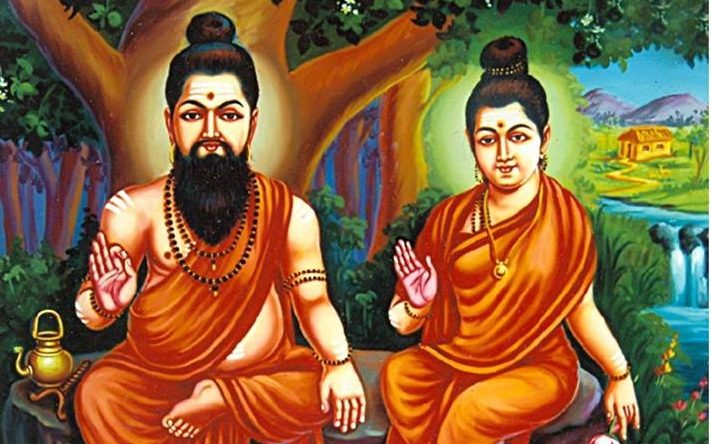
Contemporary Masters
Holy Sites and Pilgrimages
Agastya ashram
Agastya had a hermitage (ashram), but the ancient and medieval era Indian texts provide inconsistent stories and location for this ashram. Two legends place it in Northwest Maharashtra, on the banks of the river Godavari, near Nashik in small towns named Agastyapuri and Akole. Other commonly accepted sites mentioned in Northern and Eastern Indian sources are near Sangli in Ainwadi (Agastinagar) (Tal-khanapur) village (Western ghats at Maharashtra), or near Kannauj (Uttar Pradesh), or in Agastyamuni village near Rudraprayag (Uttarakhand), or Satpura Range (Madhya Pradesh). In Southern sources and the North Indian Devi-Bhagavata Purana, his ashram is based in Tamil Nadu, variously placed in Tirunelveli, Pothiyal hills, or Thanjavur. Facing east, he penanced upon a rock at Kanyakumari immediately after the beginning of the Kali Yuga. Tradition holds that his final resting place is in Agastyarkoodam in Thiruvananthapuram.
Temples
Temples for Agastya are found in Tamil Nadu. They include the Sri Agasthiyar Temple at Agasthiyar Falls (Kalyana Theertham) in Papanasam (Tirunelveli District) and the Sri Lobamudra Samedha Agasthiyar Temple in the Arulmigu Chidambara Vinayagar Thirukoil at A. Vellalapatti (Madurai District) (7 km from Alagarkovil).
His shrine at the Pothigai Hill is mentioned in both Ilango Adigal’s Silappadhikaram and Chithalai Chatanar’s Manimekhalai epics.
Agastya statues or reliefs feature in many early medieval temples of north India, south India, and Southeast Asia. One famous Agastya temple is located in Uttarakhand in the town of Agastyamuni. The town derived its name from the name of Sage Agastya. The Dashavatara Temple in Deogarh (Uttar Pradesh, near Madhya Pradesh border) features a 6th-century Gupta Empire-era Agastya carving. Similarly, in Karnataka, he is reverentially shown in several 7th-century temples such as the Mallikarjuna temple in Mahakuta and the Parvati temple in Sandur. He is a part of many Chalukya era Shaivism temples in the Indian subcontinent peninsula.
The artistic iconography of South Asian and Southeast Asian temples shows common themes such as him holding a pitcher, but also differences. For example, Agastya is featured inside or outside the temple walls and sometimes as a guardian at the entrance (dvarapala), with or without a potbelly, with or without a receding hairline, with or without a dagger and sword. Rock-cut temples and caves, such as the 8th-century Pandya rock temples group, also show Agastya.
Agastya Muni Cave (Gufa) – https://www.youtube.com/watch?v=V7Yj5zk-56I
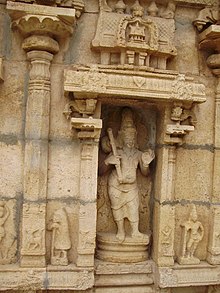
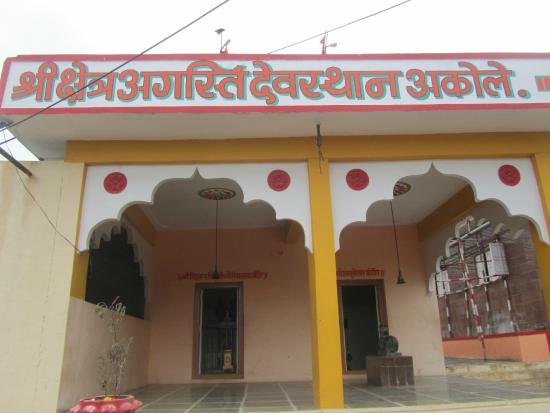
Bibliography
- Agastya in the Tamil Land https://rarebooksocietyofindia.org/book_archive/196174216674_10152515345196675.pdf
- Rishis and Rishikas by Prof Shrikant Prasoon
External Links
https://en.wikipedia.org/wiki/Agastya
https://www.esamskriti.com/e/Culture/Indian-Culture/AGASTYA-MUNI-1.aspx
https://pragyata.com/agastya-muni-lost-in-the-ages-but-found-today/
http://mahaavtarbabaji.com/about-mahaavatar/
https://www.vyasaonline.com/encyclopedia/agastya/
http://shaktianandayoga.com/teacher/about-babaji/
https://arungovil.in/the-story-of-rishi-agastya-and-mata-lopamudra.html
https://vedicfeed.com/sage-agastya/
https://peoplepill.com/people/agastya
https://www.thehindu.com/features/friday-review/religion/a-sage-of-great-renown/article4978697.ece
https://arungovil.in/rishi-agastya-the-guru-who-guided-shri-ram-to-destruct-the-evil-forces.html
https://en.wikipedia.org/wiki/Canopus


